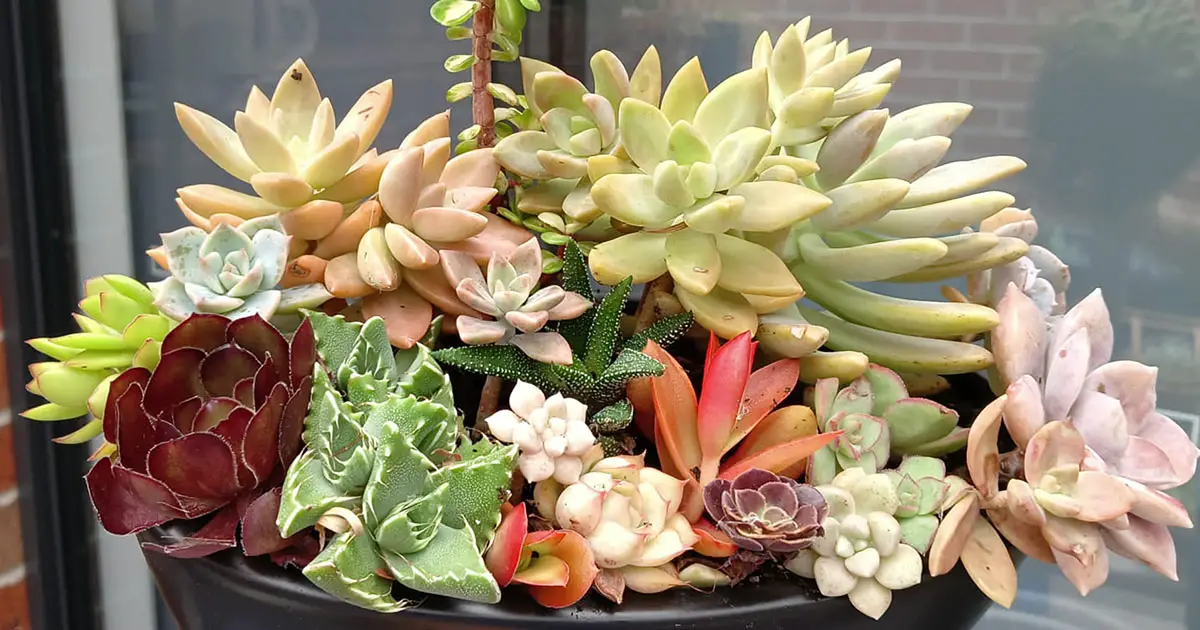Succulents are often touted as being easy houseplants to keep due to their low maintenance needs. But these plants are unique, which means they have different requirements than most other types of houseplants. For this reason, many people—from novices to expert houseplant keepers—struggle to get their succulents to thrive.
Luckily, once you know the secrets to keeping succulents happy, they truly are easy keepers. Here are our top 5 expert tips for keeping succulents thriving all year long.
1. Find the Right Pot

If you want your succulents to thrive, you need to make sure they’re in the right kind of pot. Luckily, finding the right pot is actually pretty easy, because all we care about is one specific feature: drainage.
It doesn’t matter what material your pot is made of, how big it is, or what color it is. What does matter is that it provides plenty of drainage.
Most succulent pots feature one large hole in the center of the bottom. Multiple smaller holes will also work, so long as the water is free to drain quickly.
The quickest way to kill your succulent is to let the roots sit in soggy soil. So be sure any pot you choose has drainage holes.
There are some great pots available on Amazon here.
More info: Read our article on choosing the right succulent pot here.
2. Use the Right Soil
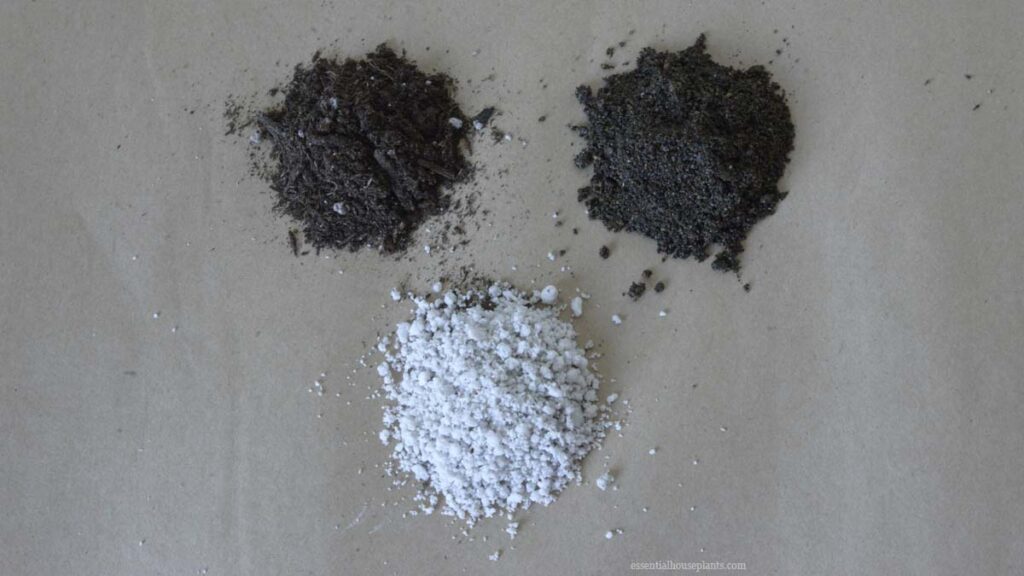
Even with a quick draining pot, certain soils will hold onto too much water for too long and put your succulent at risk of rot.
That’s why you need to be sure to use quick-draining soil with plenty of air pockets.
The easiest option here is to get potting soil made for cactuses (often called “Cactus Mix”). Here is one of our favorites.
This kind of soil is made up of sand, gravel, perlite, and pumice. The sand and gravel allow water to slip through quickly while providing air gaps that keep the soil from getting too compact. Pumice and perlite absorb water while increasing aeration to balance the moisture and air content of the soil.
If you don’t have cactus soil, you can make your own by mixing high-quality potting soil with perlite and a little bit of sand. You want the soil to perlite mixture to be about 50/50.
Learn More: Get our DIY succulent soil mix here.
3. Make Sure It Gets Enough Light
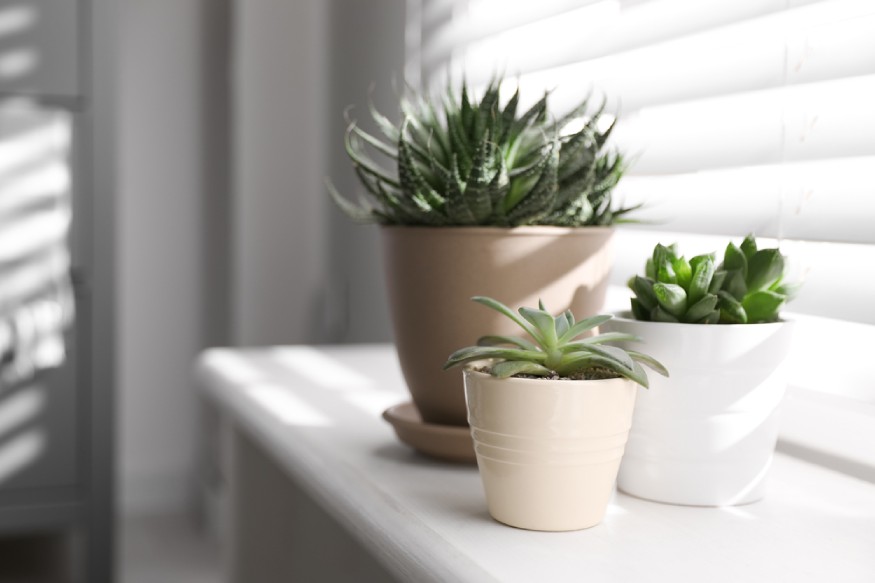
The vast majority of succulents out there are desert plants, which means they are used to getting a lot of sun. This can be problematic in the indoor environment.
The best place for your succulent is a south-facing window that receives at least six hours of sunlight per day. Many common succulents, including aloe, cacti, and most colorful succulent varieties, do best with direct sunlight.
Some succulents are more tolerant of shadier conditions. Mother-In-Law Tongue, for instance, can thrive in very low light conditions.
You can find out the optimal light requirements for your particular succulent by checking out our succulent guides.
4. Let the Soil Dry Out
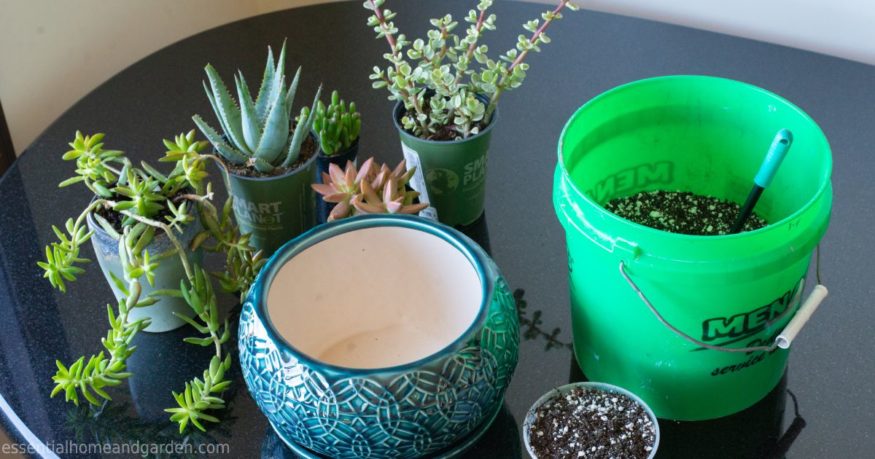
The biggest mistake most succulent owners make is watering too often (and watering the wrong way—more on that in a moment).
Unlike tropical houseplants that need to be watered about once a week to keep the soil moist, succulents prefer to dry out completely between waterings. For these short-rooted plants, that means the top inch to inch-and-a-half of the soil needs to be bone dry before you water them again.
Allowing the soil to fully dry ensures that the roots won’t rot due to retained moisture.
In dry climates, this generally equates to watering once every other week. In more humid regions, you may find you only need to water every three weeks.
5. Water the Right Way
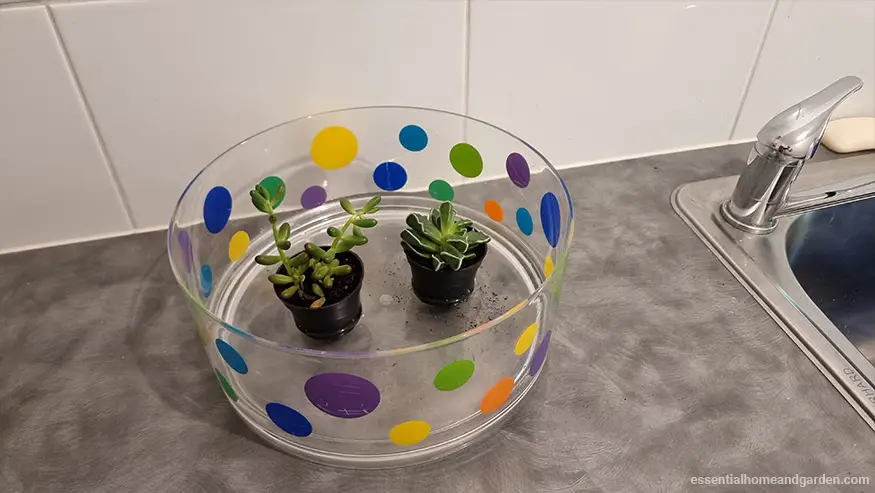
Once the soil is bone-dry on top, it’s time to water your succulent. How you do this has a huge impact on the overall health of your succulent over the long term.
These plants are not fans of being wet, and that includes their leaves. This means you want to avoid splashing them while watering them and you definitely never want to use a spray bottle on them.
You may think that because these plants like it dry, they would do best with a tiny bit of water at a time. But actually, they prefer deep waterings that soak all the soil in the pot. This kind of watering best emulates the infrequent, yet drenching rains that many deserts experience.
So the key to watering succulents is to soak the soil without getting the plants too wet and to make sure the soil drains quickly afterward.
I’ve found that the easiest way to check all these boxes is to set the succulent pot in a pan of water. Allow the soil to soak up the water until the top of the pot is noticeably moist. Promptly remove the pot from the water and let it drain into your sink for about five minutes before putting it back in its saucer.
It’s important not to let the water drain into the pot saucer, as this will cause standing water that will keep the soil too moist for too long.
Learn more: We have a full guide to watering your succulent correctly here.
Takeaways
With a well-draining pot, well-draining soil, plenty of light, and deep, infrequent watering, your succulent is just about guaranteed to thrive.
With these five needs met, you’ll find that succulents truly are easy-keepers.

